Have you ever wondered how artisan chocolatiers turn humble cocoa beans into the delightful chocolate bars you enjoy? The journey from bean to bar involves crucial steps that impact flavor and texture, including selecting premium cocoa beans, fermentation, roasting, and more. In this article, I will explore the critical stages of the bean to bar chocolate process, emphasizing techniques like refining with a melanger and the importance of tempering for perfect crystallization. By understanding these processes, you’ll not only appreciate chocolate more but also enhance your own chocolate-making skills.
Selecting Premium Cocoa Beans: The Foundation of Quality Chocolate
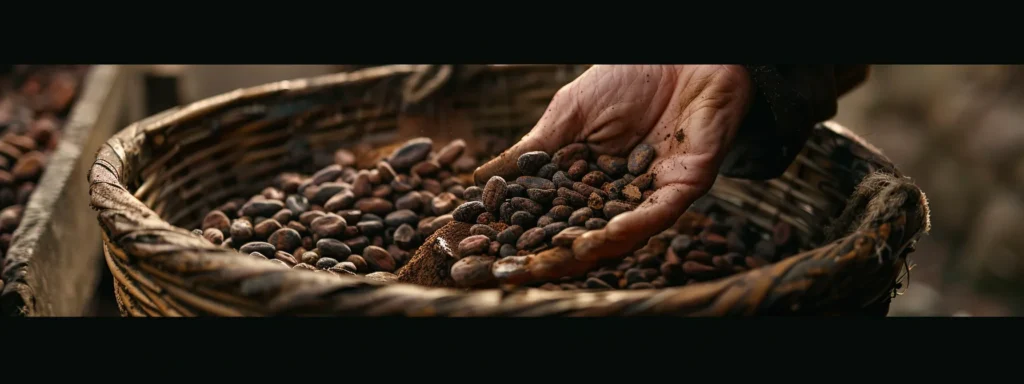
Selecting premium cocoa beans is pivotal in creating high-quality chocolate. I will explore various cocoa bean varieties, highlighting how their flavor profiles and seed characteristics influence the final product’s taste. Additionally, I will discuss ethical and sustainable sourcing practices, ensuring that each ingredient not only enhances flavor but also supports responsible farming practices. This foundation sets the stage for an exquisite chocolate experience.
Understanding Different Cocoa Bean Varieties
When diving into the world of cocoa beans, I find it essential to understand the various types that contribute to the flavor and quality of chocolate. The three main varieties—Criollo, Forastero, and Trinitario—each possess distinct characteristics that define their taste profiles. For example, Criollo beans, often regarded as the finest, have a lower water content and can lead to a richer flavor, while Forastero beans, predominantly used, typically produce a more robust taste that is suitable for baking.
Additionally, sourcing these cocoa beans through fair trade practices plays a crucial role in supporting farmers and ensuring ethical production. Many regions, such as the Ivory Coast, rely on these practices to boost local economies and improve living conditions. As I explore different bean varieties, I am constantly reminded of the importance of selecting quality ingredients, which ultimately lead to a superior chocolate experience enhanced by the right emulsifiers, including lecithin, for a smooth texture.
Ethical and Sustainable Sourcing Practices
In my pursuit of exceptional chocolate, I’ve learned that ethical and sustainable sourcing practices are fundamental. By prioritizing suppliers who focus on fair trade and environmentally friendly methods, I ensure that each bean contributes not only to a rich mouthfeel but also to a responsible production process. The commitment to sustainable practices extends beyond the bean to encompass all stages, including refining processes that minimize waste, such as recycling husk materials, thereby honoring both the product and the people behind its creation.
Fermentation and Drying: Enhancing Natural Flavors
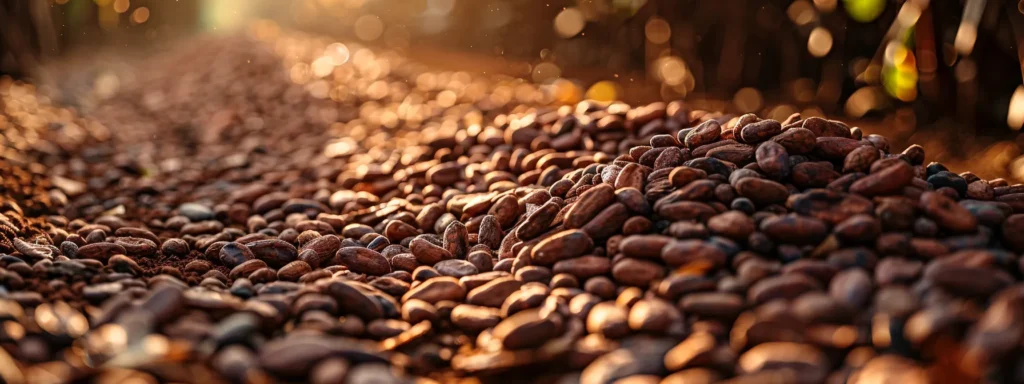
The science behind fermentation plays a crucial role in developing the flavors of chocolate produced from the Theobroma cacao bean. I have found that optimal drying techniques are essential for flavor preservation, impacting the chocolate’s final profile. Together, these processes refine the cocoa, preparing it for conching and winnowing, ultimately leading to the exquisite chocolate bar that I cherish.
The Science Behind Fermentation
The process of fermentation is vital in developing the flavor profile of chocolate. When fresh cocoa beans are harvested, I ensure they are fermented in a controlled environment, maintaining room temperature with a precise thermometer to monitor the process. This fermentation transforms the beans, breaking down their pulp and enhancing the underlying flavors that will eventually be revealed in the chocolate bar, resulting in a rich, complex taste that is a hallmark of high-quality cocoa powder.
Optimal Drying Techniques for Flavor Preservation
To preserve the rich flavors developed during fermentation, I focus heavily on optimal drying techniques immediately following the harvest of cocoa beans. Controlling moisture levels is vital; too much moisture can lead to spoilage while insufficient drying can affect the taste profile. By applying the right amount of pressure during the drying process, I can help achieve a consistent mass that retains essential flavors, preparing the beans for the subsequent tempering stage that further enhances the chocolate’s smoothness and quality.
Roasting the Beans: Developing Complex Aromas
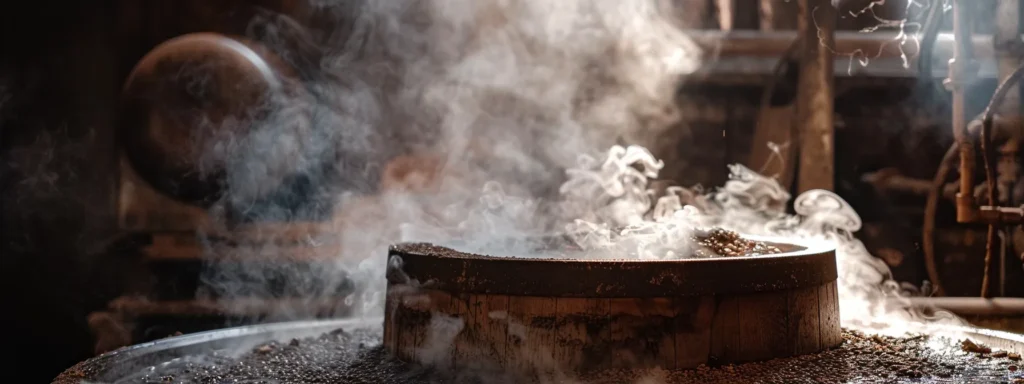
The roasting of cocoa beans is a pivotal step that significantly influences the flavor profile of the final chocolate product. I will discuss roasting profiles and their impact on taste, including how different temperatures and times can enhance specific flavors in the mixture. Additionally, I will cover the equipment used in cocoa bean roasting, essential for achieving the perfect bonbon texture, especially when integrating elements like powdered milk in candy making. Understanding these aspects is crucial for crafting high-quality chocolate, with particular emphasis on sourcing practices from regions such as West Africa.
Roasting Profiles and Their Impact on Taste
During the bean to bar chocolate process, the roasting profile I choose significantly influences the final flavor of the chocolate. By experimenting with different temperatures and durations, I can enhance desirable characteristics, like the rich, complex aromas often associated with chocolate from rainforest regions. The precise temperature control, combined with tools such as a wet grinder and carefully crafted molds, allows me to create a product that can range from deep, dark chocolate to sweeter varieties, including white chocolate, all highlighting the unique traits of the cocoa beans used.
Equipment Used in Cocoa Bean Roasting
In my chocolate-making process, the equipment I use for roasting cocoa beans is essential for achieving the desired flavor and aroma. A high-quality roasting machine allows for precise control of temperature and airflow, ensuring consistent results that develop the complex notes in the cocoa solids. Following roasting, I rely on a ball mill to refine the cocoa mass, reducing particle size and integrating the cocoa fat, which results in a smooth texture that’s critical for a well-balanced chocolate bar.
Refining and Conching: Achieving Smoothness and Flavor Depth
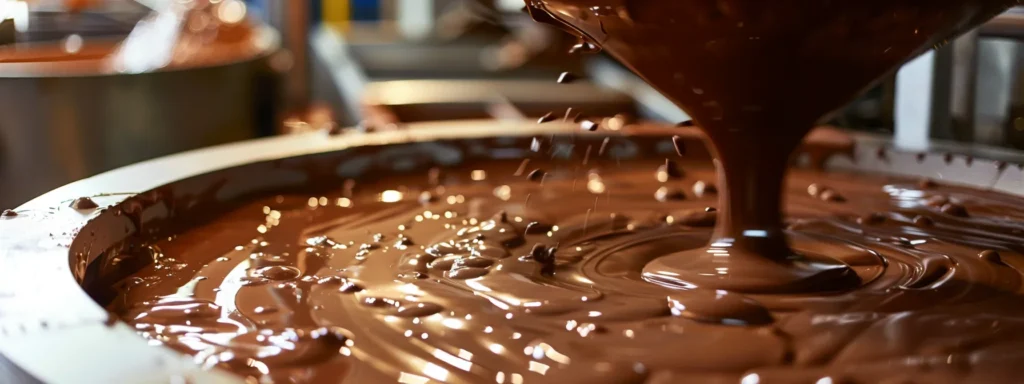
Refining and Conching: Achieving Smoothness and Flavor Depth
The grinding process is crucial for turning cocoa beans into chocolate, starting with the nibs and transforming them into cocoa liquor. Here, I will discuss how this process interacts with cocoa butter and the role of acid flavor notes developed through fermentation. Additionally, I will explore how conching influences the texture of the final chocolate, ensuring a smooth and pleasant mouthfeel.
The Grinding Process: From Nibs to Liquor
The grinding process starts with the cocoa nibs, which are crushed into a thick liquid known as cocoa liquor. As a chocolatier, I ensure this step is done meticulously, as the chocolate’s smoothness is heavily influenced by how well the nibs are ground. The cocoa fat releases during grinding, aiding in the formation of a perfect couverture chocolate, which is crucial for the desired crystal structure that enhances the texture and depth of flavor.
| Grinding Process Steps | Description |
|---|---|
| Cocoa Nibs | Crushing and grinding cocoa nibs into a liquid state called cocoa liquor. |
| Cocoa Liquor | The mixture of cocoa solids and cocoa butter, essential for couverture chocolate. |
| Temperature Control | Maintaining optimal temperatures to preserve flavor and texture during grinding. |
How Conching Influences Chocolate Texture
Conching is a pivotal stage in the chocolate-making process that significantly influences the texture of all types of chocolate, including rich dark chocolate. During this process, chocolate liquor undergoes continuous mixing and aeration, which helps to break down the remaining solid particles, resulting in a smoother, more homogenous texture. I find that the duration and conditions of conching can dramatically alter the mouthfeel of the final confectionery product, enhancing the overall flavor while ensuring it melts seamlessly in the mouth.
Tempering Chocolate: Mastering the Art of Crystallization
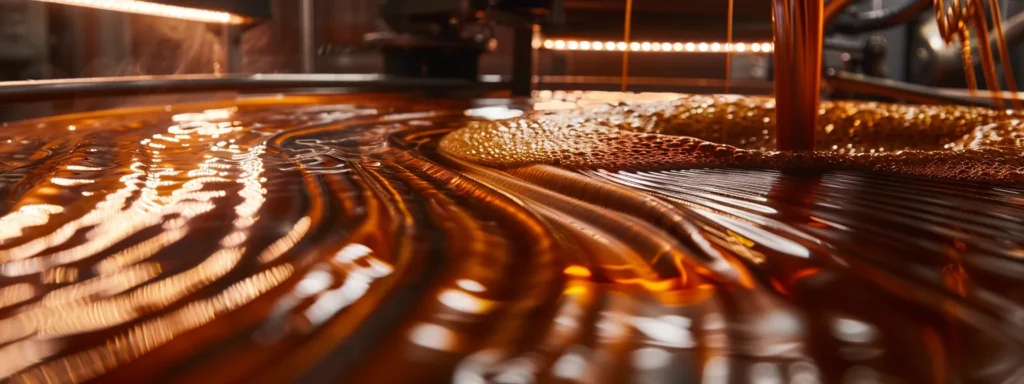
Tempering chocolate is a critical step in the manufacturing process, as it ensures a smooth texture and glossy finish for chocolate bars. In this section, I will provide a step-by-step guide to the tempering process using a machine, highlighting key techniques that preserve the quality during germination. Additionally, I will discuss common mistakes related to humidity and how to effectively avoid them, ensuring your final product shines with perfection.
Step-by-Step Guide to Tempering Chocolate
To temper chocolate effectively, I start by melting it gently, ensuring the temperature reaches around 115°F for dark chocolate or 110°F for milk chocolate. I then cool it down to approximately 84°F, stirring continuously to foster a stable crystallization of cocoa butter crystals while preventing any bacterial growth. Finally, I reheat the chocolate slightly to about 88°F, achieving that perfect balance of smoothness and shine, which is essential for creating beautifully glossy bars and confections.
Common Tempering Mistakes and How to Avoid Them
One common mistake I see when tempering chocolate is failing to monitor temperatures accurately. If the chocolate overheats beyond the recommended range, it can lose its ability to crystallize properly, resulting in a dull appearance and poor texture. To avoid this issue, I always use a reliable thermometer and frequently check the chocolate temperature throughout the process.
Another frequent error is neglecting to stir continuously during cooling. Stirring helps promote the formation of stable cocoa butter crystals, ensuring a smooth and glossy finish. By maintaining a consistent stirring motion, I can achieve the desired sheen and texture without compromising quality:
- Use a reliable thermometer to monitor temperature.
- Stir continuously while cooling to promote stable crystallization.
- Avoid overheating the chocolate during melting.
Molding and Packaging: Presenting the Exquisite Chocolate Bar
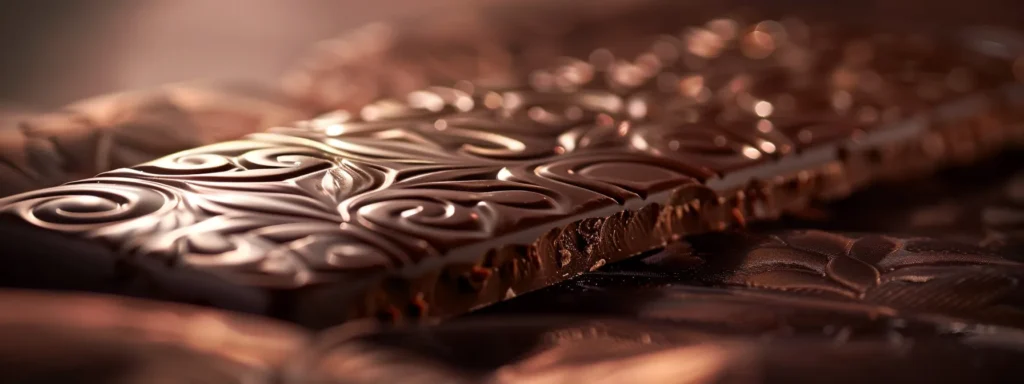
In the final phase of creating exquisite chocolate bars, I focus on two crucial aspects: creative molding techniques and packaging that preserves freshness and enhances aesthetics. Creative molding allows me to shape chocolate into unique designs that appeal to consumers, while thoughtful packaging ensures that each bar remains fresh and visually enticing. Together, these elements elevate the overall chocolate experience and make a lasting impression.
Creative Molding Techniques
When it comes to shaping the perfect chocolate bar, I embrace various creative molding techniques that not only enhance the product’s appeal but also showcase my craftsmanship. By exploring unique molds, I can produce bars in different shapes, such as geometric designs or seasonal motifs, which captivate consumers. Additionally, I often incorporate layering techniques or surprise fillings to elevate the flavor experience, making each bite satisfying and memorable:
- Use of unique molds for distinct shapes.
- Incorporating layering for depth in flavor.
- Adding surprise fillings to enhance the tasting experience.
Packaging for Freshness and Aesthetics
In my experience, packaging plays a crucial role in preserving the freshness of chocolate while also enhancing its visual appeal. I choose materials that protect the chocolate from environmental factors like light and moisture, ensuring it stays flavorful and smooth. Additionally, eye-catching designs resonate with consumers, translating my craftsmanship into a visually enticing experience that encourages them to indulge.
| Packaging Elements | Purpose |
|---|---|
| Material Selection | Protects from light and moisture, maintaining freshness. |
| Visual Design | Attracts consumers and reflects craftsmanship. |
| Sealing Techniques | Ensures airtight conditions for longer shelf life. |
Conclusion
The bean-to-bar chocolate process is essential for creating exquisite chocolate, focusing on every detail from selecting premium cocoa beans to the final molding and packaging. Understanding the distinct characteristics of cocoa bean varieties and implementing ethical sourcing practices ensures a rich flavor profile while supporting responsible farming. Mastering techniques such as fermentation, roasting, refining, and tempering elevates the chocolate’s texture and flavor depth. By prioritizing quality and sustainable processes, chocolatiers can craft an exceptional experience that resonates with consumers and honors the art of chocolate making.
